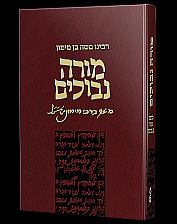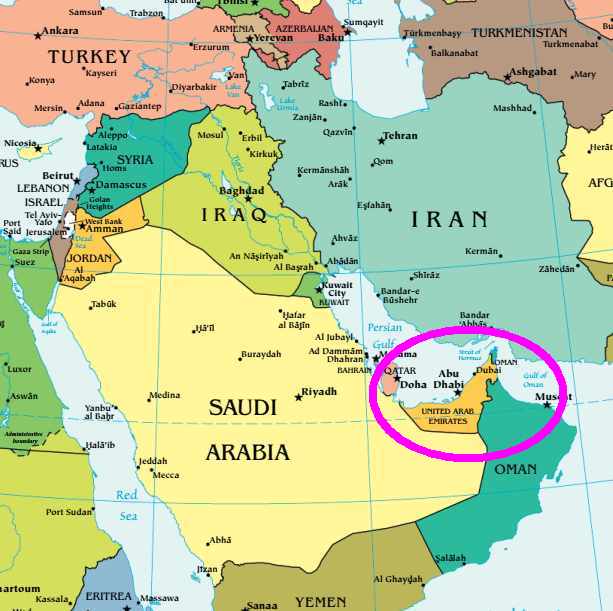  |
|
| ||||||
This Google Custom Search looks only in this website. Surprise Agreement Upsets Conventional Wisdom about the Middle East
The announcement of an agreement between Israel and the United Arab Emirates (UAE) to fully normalize relations stood more than a half century of Western wisdom about the dynamics of the Middle East on its head. The starting point for all analysis of the situation has been that the key issue in the entire Middle East is the Palestinian problem. Solve that, so the wisdom goes, and everything else will fall into place. Fail to solve that, and you have solved nothing.
However...
On Erev Chanukah, the Foreign Minister of the Emirates, Abdallah bin Zaid el Nahian, chose to publish an article which appeared in a British news weekly. Ostensibly, routine stuff, except that the column dealt with relations being cemented between Israel and the Gulf Emirates. It bore the heading, "An Arab-Israel agreement is being formulated in the Middle East."
The respected minister offered no further information and it was clear from this announcement that he wished to allude to something without being explicit. It was an elegant way of Abdallah bin Zaid, younger brother of Mohammed bin Zaid el Nahian, the strongman of the Emirates and considered to be the actual ruler, to wave a hand towards peace.
Several days later, on the 29th of Kislev, the fifth night of Chanukah, the official overseas representatives of the El Nahian family first demonstrated its good will, wishes and intentions to the Jewish nation.
From Our Archives
The Roar of the Lion: Understanding Elul
by Rabbi Daniel Yaakov Travis
Waking Up
The following story can only be understood in light of the fact that Rav Shach, zt"l, held that HaRav Chatzkel Levenstein, zt"l, was one of the most dedicated servants of Hashem in the past two hundred years.
HaRav Chatzkel Levenstein felt that Elul was a time to totally dedicate oneself to Divine service and as such was not a time to celebrate weddings. Once he was invited to a chasunah during Elul and because of the stature of the parties involved he was committed to attend. Although Divine furor burned inside of him, he was able to hide his anger from the other participants. However when he was called on to speak, he could no longer control his feelings and, at the top of his lungs, he screamed, "ELUL!" after which he left the hall.
Almost twenty years ago, I was sitting at a shmuess in yeshiva and heard the above story. There was a small attic above the beis medrash where the shmuess was being given. One of the talmidim made the unwise decision to skip this momentous shiur and instead to ascend up to that attic and catch up on his sleep. That bochur will never forget the day he woke up to the cry of "ELUL!" as the entire beis medrash reverberated at the awesome strength of the Mashgiach's powerful vocal chords...
Is a Shofar Blown in the City and the People are Unafraid?
by HaRav Moshe Man
Part II
In the first part of this essay, HaRav Man wrote that a person must be aroused by the call of the shofar to do teshuvoh. He called particular attention to the general situation with its fear and terror of attack, and quoted a letter written by the Chofetz Chaim in a comparable situation. The latter wrote that Hashem has various ways to send us messages and sometimes he uses the people of the world. If we see the increasing strength of the middas hadin we must return to Hashem. "The longer we wait to do teshuvoh, the more His wrath will increase chas vesholom, and everyone who has yiras Hashem in his heart has an obligation to do teshuvoh.
*
Yet the essence of teshuvoh is not just altering one's conduct, but actually changing one's ways, as the nevi'im say, "Veya'azov rosho darko" (Yeshayoh 54) and "Im echpotz bemos horosho ki im beshuv rosho midarko vechoyoh" (Yechezkel 33). And Dovid Hamelech writes, "Alameda posh'im darkecho" (Tehillim 51:15), meaning a man must alter his path and must be taught the correct path he should walk on.
Akeidas Yitzchok, Sha'ar 100 says that "those who follow a wayward path have no hope, except to turn back from their evil course, and to prepare the path that will help them to improve, by doing teshuvoh. As it says in Chapter One of Even Shleima, one must teach himself to tilt every bad middoh to the opposite extreme."
Tenuas Hamussar, citing the Alter of Novardok, writes that he who regrets his misdeeds and does not follow a new path is like someone who boards a ship sailing west and in the middle of the journey, changes his mind and decides he wants to go east. But instead of switching to an eastbound ship, he stays on the same ship and turns to the east rather than west (Part 4, p. 253).
In Tempestuous Times: The Life And Achievements Of HaRav Avrohom Kalmanovitz Zt'l
By Rabbi Aryeh Gefen
Part Four
The Yeshiva's New Home
On Rosh Chodesh Elul 5700 (1940), Rav Chaim Shmuelevitz zt'l delivered the first shiur keloli in the Mirrer Yeshiva's new "home," the beautiful and spacious two story beis haknesses Beis Aharon in Shanhgai. At the time, nobody knew or expected that the yeshiva would remain in Shanghai for the following five years.
Shanghai was an open city of four million Chinese and one hundred thousand foreigners; no visas or passports were required to gain entry and, until August 1939, immigration was unrestricted by the Japanese authorities, who controlled the city's harbor. Despite the city's negative reputation, it became a haven for Jewish refugees who fled from Nazi- controlled Germany and Austria in the year before the war broke out. The Jewish refugee community grew to nearly eighteen thousand souls.
Approximately half of the two thousand bnei Torah who had escaped to Japan via Vilna were either already in possession of, or managed to obtain, end visas to Eretz Yisroel, the United States, Canada, or other countries to which they could actually go. The remaining thousand, whom the Japanese expelled to Shanghai, comprised rabbonim and bochurim from a number of different yeshivos.
The largest contingent was that of the Mirrer Yeshiva, the only Eastern European yeshiva that survived the war virtually intact. The leaders of the Shanghai community devoted themselves to the needs of the bnei Torah and soon after their arrival, the various yeshivos were quartered and the sound of Torah continued being heard. Besides individual sources of support, the Vaad Hatzoloh and the Joint also contributed to the yeshivos' upkeep and substantial sums reached them. Although contacts with Rav Kalmanovitz over plans for reaching the United States continued amid concern for the future, the Mirrer Yeshiva's situation during the first four months in Shanghai was stable.
|
||||||




.jpg)

